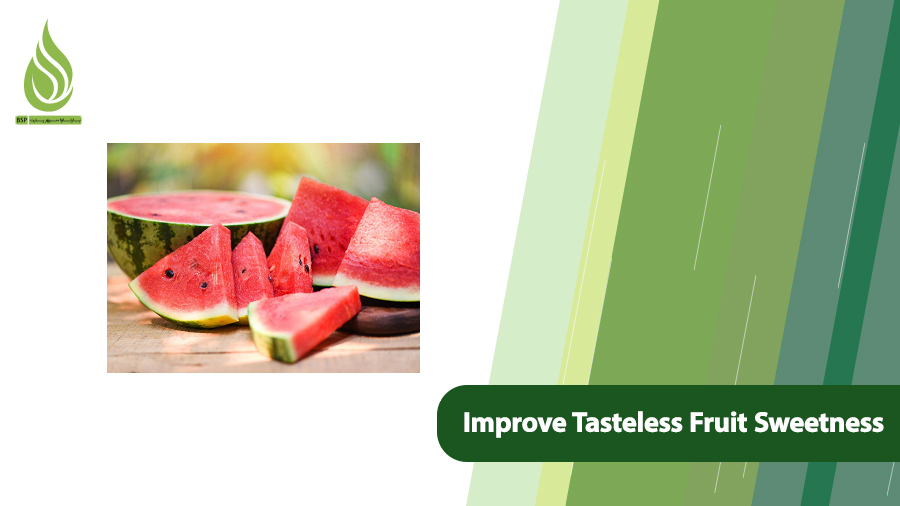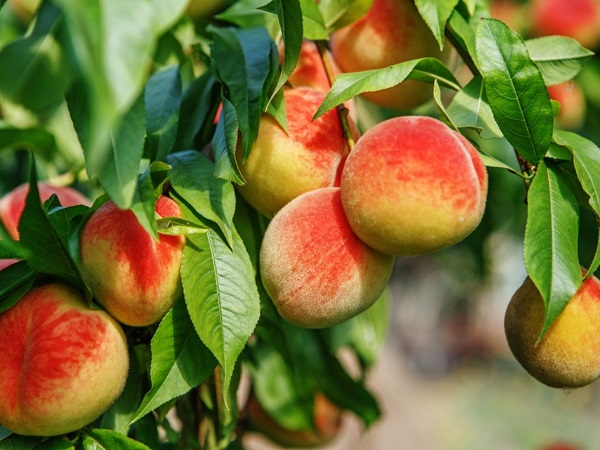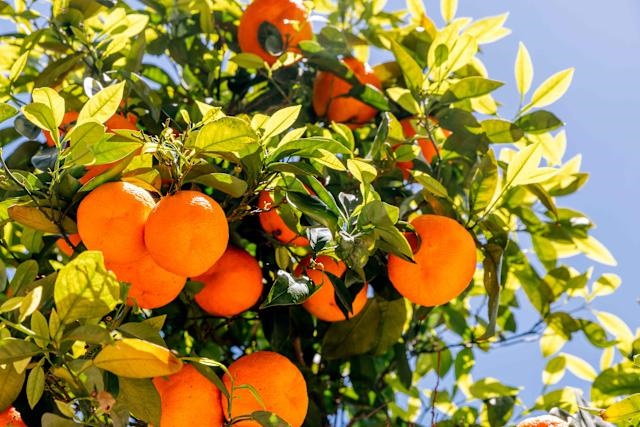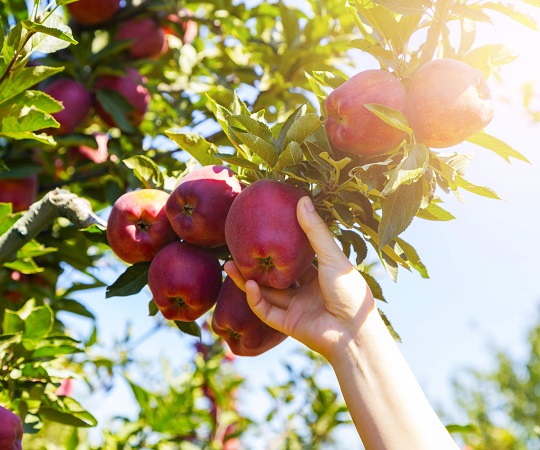
Why Do Fruits Become Tasteless? How to Improve Fruit Sweetness
One of the most common frustrations for gardeners, farmers, and everyday consumers is biting into a fruit that looks perfectly ripe on the outside but tastes bland and unappealing on the inside. This lack of sweetness and flavor can stem from a variety of factors, ranging from environmental conditions to how the plants are watered and fertilized. In this article, we’ll dive into the primary causes of tasteless fruit and explore proven strategies to enhance their sweetness. By understanding these elements, you can improve the quality of your harvest, whether you’re a home gardener or a commercial grower. Stick with us as we break it down step by step.
What Causes Fruits to Lose Their Flavor?
Fruits play a vital role in our diets, providing essential vitamins, minerals, and antioxidants that support overall health. Beyond nutrition, their taste, combined with an attractive appearance, is what makes them marketable and enjoyable. Shoppers are often willing to pay a premium for fruits that are sweet and flavorful, rather than settling for something mediocre. As a farmer or gardener, focusing on the factors that influence fruit taste can directly boost your profitability and satisfaction.
The flavor of a fruit is shaped by several key elements, including:
- The plant’s growth conditions
- Nutrients available in the soil
- The amount of natural sugars the fruit can accumulate
When any of these are disrupted, fruit may fail to develop the desired sweetness, resulting in a bland or watery taste.

Tip: There are practical solutions to optimize fruit growth and enhance flavor. By implementing these, farmers can produce high-quality, marketable fruits that stand out.
1. Growth Conditions of the Plant
Fruits grown under suboptimal conditions often lack the robust flavor we expect. Environmental factors heavily influence fruit sweetness and overall taste. Let’s look at the main ones:
Sunlight
This is the powerhouse behind photosynthesis, the process by which plants convert light into energy and produce sugars. Proper sunlight during the ripening phase ramps up sugar levels in fruits. Orchards in shady or low-light areas typically yield less flavorful produce. For example, fruits like tomatoes and berries thrive with at least 6-8 hours of direct sunlight daily. Without it, the natural sugar production stalls, leading to blandness.
Temperature and Weather Conditions
Extreme cold or heat can hinder flavor development. For example, prolonged heat waves might stress plants, reducing sugar accumulation, while frost can damage developing fruits. Ideal temperatures vary by fruit type; citrus prefers warmer climates, while apples do better in cooler ones. Climate change has exacerbated this issue, with erratic weather patterns contributing to inconsistent fruit quality in many regions.
Soil Quality
Poor soil, lacking essential minerals, directly leads to tasteless fruits. Soil that’s compacted, drained poorly, or depleted of nutrients can’t support healthy plant growth. Testing soil regularly for pH and nutrient levels is crucial; most fruits prefer a slightly acidic to neutral pH (around 6.0-7.0).
Watering Practices
Overwatering is a sneaky culprit; it makes fruits watery and dilutes their natural sugars, a phenomenon known as “waterlogging.” When fruits absorb too much water, the concentration of sugars drops, resulting in a bland taste. On the flip side, underwatering stresses the plant, leading to smaller, less flavorful fruits. The key is balanced, consistent watering. Modern methods like drip irrigation deliver water directly to the roots, minimizing waste and preventing dilution of flavors. Research shows that reducing irrigation in the final week before harvest can concentrate sugars and improve taste without compromising yield. For tomatoes, deep watering (about 1-2 inches per week) encourages strong root systems and better flavor development.
Additional Insight from Science
Studies on fruit flavor reveal that stress from irregular watering can actually enhance certain tastes if managed carefully. For low-acid varieties like nectarines, controlled water deficits concentrate sugars, acids, and aromatic compounds, bringing out richer flavors. However, overdoing it risks plant health, so monitoring soil moisture with tools like tensiometers is recommended.

Note: Fruits evolve through different taste stages during growth. Unripe ones are often tart or bland, but as they mature, sugar production kicks in, leading to that desirable sweetness in fruit.
2. Soil Nutrients and the Importance of Fertilization
A nutrient-rich, healthy soil is the foundation for thriving fruit trees and high-quality produce. For fruits to reach optimal sugar levels, color, and aroma, they need to absorb key macronutrients and micronutrients effectively. Beyond just the chemicals, soil’s physical properties, like texture, drainage, pH, organic matter content, and aeration, all play a role in flavor outcomes.
Fertilization is a cornerstone of productive farming. When done right and at the right time, it boosts plant growth and crop quality. But improper use can waste money and even harm yields. Fertilization directly impacts fruit taste by influencing nutrient uptake.

Tip: For sweet, flavorful fruits, aim for soil with good texture, excellent drainage, balanced pH, and plenty of organic matter.
Different fertilizers have specific effects and should be applied during particular growth stages. Nitrogen-based fertilizers, for example, promote leafy and branch growth, making them ideal before flowering and fruiting. However, excess nitrogen during fruit development can accumulate in the fruit’s tissues, leading to blandness by prioritizing vegetative growth over sugar production. A common issue in modern agriculture is the overuse of nitrogen fertilizers for bigger yields, sacrificing taste.
During fruiting, shift to fertilizers rich in potassium, calcium, and magnesium, which enhance flavor. Deficiencies in these elements are major reasons for tasteless fruits. Potassium, in particular, is a star player in fruit sweetness.
The Role of Potassium in Depth
Potassium (K) isn’t just a nutrient; it’s essential for transporting sugars from leaves to fruits, improving color, taste, and shelf life. In citrus, like oranges, optimal potassium levels increase fruit weight, yield, and total sugars, especially sucrose. It activates pathways for sugar loading and metabolism, ensuring more sweetness reaches the fruit. Studies on navel oranges show that potassium fertilizers boost sucrose phosphate synthase activity, promoting sugar accumulation. Without enough K, fruits remain bland despite looking ripe.
Calcium strengthens fruit cell walls, improving texture and longevity, while magnesium aids in chlorophyll production, supporting photosynthesis and sugar creation. Organic options like composted manure enhance soil structure and nutrient absorption. Micronutrients such as iron and boron are also vital for overall flavor complexity.
By following a balanced nutrition plan enriched with potassium and magnesium during ripening, growers can deliver sweeter, more aromatic fruits that fetch higher prices.
3. Natural Sugars Essential for Fruit Sweetness
The delightful taste of fruits hinges on their natural sugar content, primarily fructose and glucose. Higher sugar percentages mean sweeter, more appealing fruits. Varieties like grapes, dates, and mangoes naturally pack more sugar, while citrus or apples vary based on growing conditions.
To maximize sugar levels, focus on:
- Sufficient photosynthesis for sugar production in leaves
- Efficient sugar transport via plant vessels
- Nutrients that support sugar metabolism
Potassium stands out here, as mentioned, but other elements contribute too. Suitable fertilizers for boosting fruit sweetness include:
- Potassium: Enhances natural sugar buildup for sweeter fruits.
- Calcium: Improves tissue quality and market appeal.
- Magnesium: Boosts photosynthesis through chlorophyll.
- Organic and Manure-Based Fertilizers: Improve soil health and nutrient uptake.
- Micronutrients: Iron and boron are key for flavor depth.
Expanding on Modern Challenges
In today’s farming, selective breeding for size, yield, and shelf life has often diluted flavors. For tomatoes, genes for sweetness were lost in favor of uniformity, but recent genomics offers a roadmap to restore them. Citrus faces issues like greening disease, which lowers sugars and alters compounds. Solutions include breeding resistant varieties and precise nutrient management.

Note: Fruit sweetness directly correlates with sugar content; the more, the better for taste and sales.
Key Methods to Make Fruits Sweeter
Tasteless fruits often result from a mix of poor watering, inadequate fertilization, early harvesting, and environmental stressors. To counteract this, consider these strategies:
- Choosing the Right Variety: Some cultivars are inherently less sweet. Opt for those bred for flavor, like heirloom tomatoes or specific apple varieties known for high sugar content.
- Optimizing Watering Schedules (Especially During Ripening): Many growers increase watering pre-harvest for heavier fruits, but this dilutes flavors. Reduce or stop watering 1-2 weeks before picking to concentrate sugars. Use consistent, deep watering earlier in the season; drip systems are ideal for even moisture without excess.
- Proper Nutrition: Essential for fruit sweetness. Apply potassium-rich fertilizers during fruit ripening to enhance sugar transport and accumulation.
- Harvesting at the Right Time: Picking too early prevents full sugar development. Fruits like tomatoes, peaches, and apricots need to ripen on the vine for peak flavor. Wait until they’re physiologically mature; check for color, firmness, and a slight give.
- Post-Harvest Storage: Improper temperatures can degrade taste. Each fruit has an optimal range; for example, bananas at room temperature, berries in the fridge. Avoid ethylene-producing fruits nearby to prevent premature ripening.
- Pruning Trees Properly: This ensures adequate light and air circulation, promoting even ripening and better flavor.
- Pest and Disease Prevention: These can disrupt photosynthesis. Use integrated pest management, like beneficial insects or organic sprays, to keep plants healthy.
- Soil Management: Regular testing and amendments maintain fertility.
In essence, effective orchard management and science-based farming are the keys to flavorful fruits.
Innovative Approaches
Emerging research highlights volatiles that enhance perceived sweetness, like in strawberries, where certain aromas amplify taste. Miracle fruit, containing miraculin, can even make sour foods taste sweet, offering potential for low-sugar diets. Organic practices often yield tastier fruits by avoiding excessive nitrogen.
Common Fruits and Specific Tips:
- Tomatoes: Avoid over-fertilizing with nitrogen; focus on potassium for fruit sweetness. Water consistently but reduce near harvest.
- Citrus: Combat greening with balanced K applications to boost sugars.
- Berries: Ensure full sun and acidic soil for vibrant flavors.
- Apples and Pears: Prune for light exposure; harvest at peak maturity.
By integrating these methods, you can transform bland fruits into sweet, irresistible treats. Remember, patience and observation are your best tools, monitor your plants and adjust as needed.
